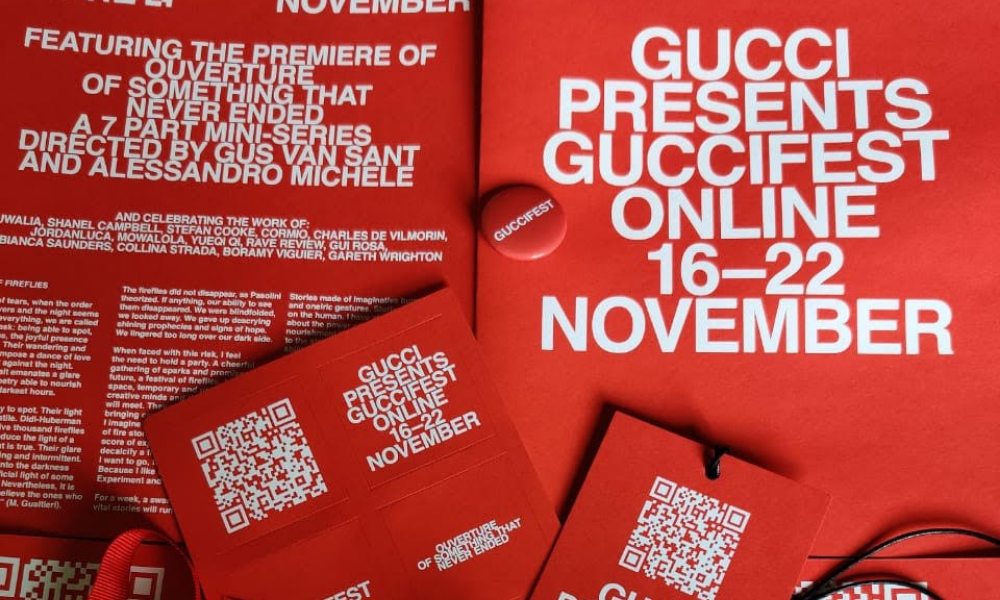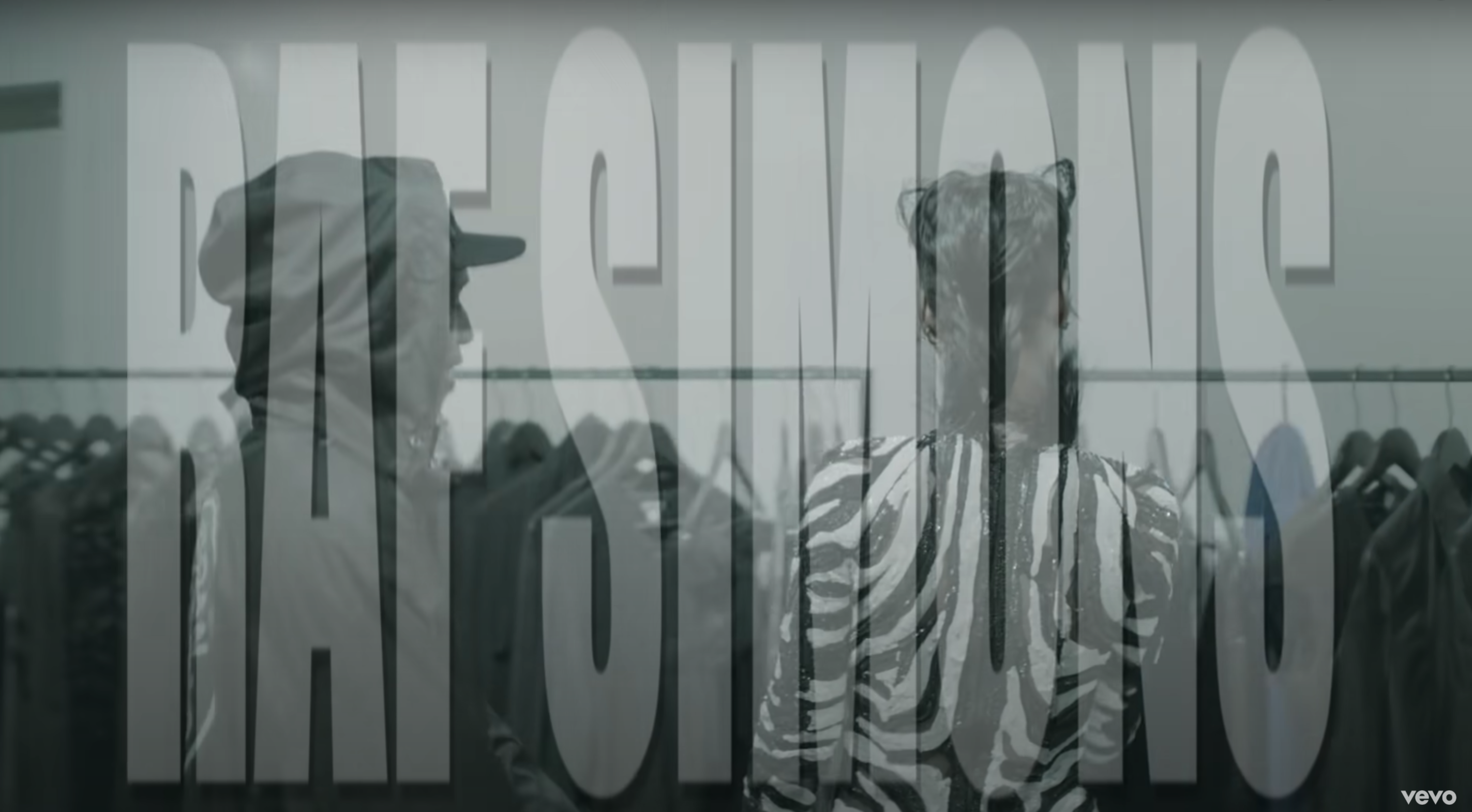In an ever-changing, technology obsessed global society, fashion brands are using media to not only promote, but to merge and BECOME media. Promotion through intangible mediums of media is the new norm of the fashion industry.

Fashion brands, in the 21st Century, have actively embraced the technological revolution. Therefore, it is arguable, these brands have no alternative but to embrace the future to either create brand relevance. The mavericks of the fashion industry have challenged traditional methods of showcasing their work by transitioning to media centric mediums that directly connect brand to the target audience.
This transition has proven to be beneficial both culturally and financially. The barriers have broken down which has unlocked opportunity for fashion branding to explore the plethora of marketing prospects available to them.
The infiltration of fashion brands stepping onto various media platforms has become expected in this digital age. This created a powerful connection that allowed fashion brands to deliver content directly to their consumers while also growing the customer base with a much higher ROI than traditional marketing techniques. This exciting time of blending fashion brands and media quickly grew stereotypical, boring and worn-out.
There is only a limited time that hashtags, competitions and Instagram challenges engaged the audience. Rejecting the tired tactic of paying influencers on social media to promote fashion brands is becoming ‘the norm’, which in turn, is forging a gap for fashion brands to seamlessly tessellate into endless media avenues. This poses brands to challenge their way of thinking and reassess brand identity, personality and focus on delivering engaging content to their target audience.

While the notion of bringing fashion and media together is presumably more natural to a newly established fashion brand that was raised as a digital native with an abundance of technology and media, iPhones in their pockets and the latest laptop in their backpacks; it is statistically not the case. To introduce a fashion brand into this saturated market full of eager and established brands in the current social climate; is a feat few are capable of keeping afloat.
The pioneers of fusing fashion brands and media as one are those that were established long before media was available to them. When brand promotion directly translated to trend following, word-of-mouth, print campaigns and cliché, structured photoshoots. Brands that have maintained a stellar reputation over decades such as Gucci (Gucci is turning 100 as of 2021), have risen to the challenge and created inconceivable marks in media that set standards for brands alike.
“I wanted to make fashion more than just clothes, ” said Alessandro Michele, Creative Director of Gucci.
Gucci did just that; made fashion much more than clothes. In November 2020 the brand launched a virtual fashion film festival called ‘GucciFest’. This virtual experience lasted for a week and was hosted on a Gucci microsite. GucciFest debuted their newest collection through a seven-part miniseries. Though the fun did not stop there – musical performances by Harry Styles and Billie Eilish were featured, along with another 15 short films from independent designers (Highsnobitey, 2020). Gucci created an experience for fans of fashion, music and the arts to come together and witness the beginning of the fashion and media revolution at its finest.

Stuart Weitzmans’ short video campaigns that are shared on their social media platforms are an example of taking a traditional idea, enhancing creativity and providing the audience with an engaging piece of online content. Simplicity is elegance, this proven in these short videos. A series of models perform a simple dance routine to a popular song wearing the collection of Stuart Weitzmans’ shoes of that season. In this case, a traditional media marketing concept combined with contemporary creative direction has conceived a simplistic, elegant and memorable experience for the audience.
Video | Stuart Weitzman Fall ’19 Campaign | 2019
Video | Stuart Weitzman Spring ’19 Campaign ‘#SSWALK’ | 2019
Fashion is so deeply rooted in media that a large percentage of what the user is exposed to is bordering subliminal. An example of creative intertextuality of binding fashion and media is the 2013 song ‘Fashion Killa’ by well-known rap artist A$AP Rocky. Throughout the 4:45 minute song, 27 designer brands are referenced by the likes of Dolce & Gabbana, Balenciaga, DKNY, Rick Owens, Raf Simmons – to name a few. The popular music video (with over 68 million YouTube views) that features music and style icon Rihanna, showcases many of the brands garments, while the names of the designers’ flash on screen.
This song is an in-direct example of how fashion and media interact, however ASAP Rocky is an influential fashion figure that works with many of these brands. Aside from this song and music video being a love letter to designers and fashion brands, it is simultaneously a fresh media marketing tactic that breaks rules, inspires, as well as educates fans on fashion brands.

The integration of media allows fashion brands to be more than a garment with a price-tag on a hanger in a store. By merging fashion and media, paths are forged, stories are created, the audience is inspired and uplifted in ways that may not be possible without media interaction. Creativity reaches new heights, compelling competitors to either ‘step-up’, or put their reputation in jeopardy and losing their place in the market.
Both the fashion and media industry are rapidly evolving. Each new season of fashion collection is dedicated to exceeding the expectations of the market. Additionally, to remain relevant and create excitement; for not only the fashion community and industry, but the ever-changing culture of fashion itself. Media is integrated into the fabric of our daily lives. At the touch of a button; the world is at our fingertips, especially for those invested in the fashion industry to any degree. When fashion brands engage with media, a new realm of possibility has been tapped into and predictability is challenged.
The era of conformity is over, traditions and structure has been deemed outdated by both audience and brand. Anything goes. The rules have changed.
Subscribe to FIB’s Weekly Alchemy Report for your weekly dose of music, fashion and pop culture news!







